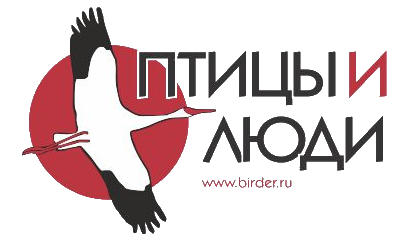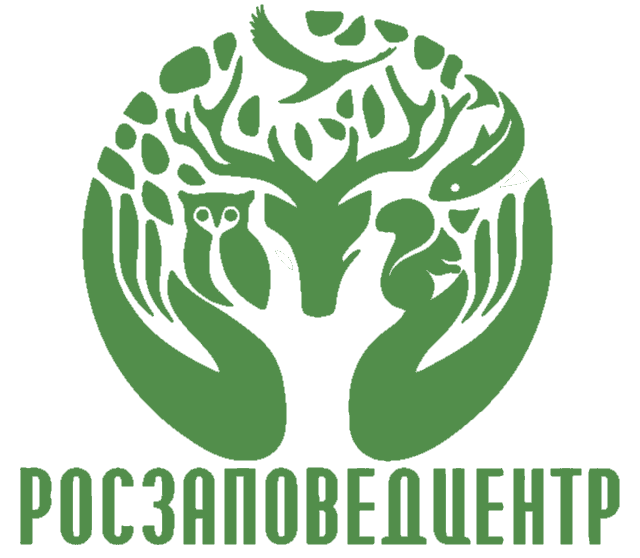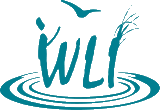Wings over Arctic. Recommendations of the Conference
Wings over Arctic:
Role of Protected Areas in Global Monitoring of Migratory Birds
Recommendations of the Conference
22 November 2018
Federal Arctic Forum “Days of Arctic in Moscow”
Organizers:
- Ministry of Natural Resources and Ecology of the Russian Federation
- Information-Analytical Centre for Support of Protected Areas – “RosZapovedCentre”
- Landscape park “Zaryadie”
- NGO for Support of Birding Development “Birds and People”
Russian Arctic serves as a nesting place for millions of migratory birds, an area where global flyways begin. Climate change and anthropogenic activities lead to disruption and disappearance of bird habitats. Sustainable state of bird populations depends on conservation status of unique and fragile Arctic nature.
Russian system of protected areas, situated along the global flyways especially in Extreme North, is created to protect typical and unique natural ecosystems – habitats of migratory birds, and to support ecological stability in the region. Protected areas serve as scientific polygons where fundamental and applied research is carried out and bird populations are monitored.
There a range of problems related to conservation of migratory birds in Russian Arctic and organization of their long-term monitoring along the global flyways. It is necessary to note the following:
- Population size of some arctic migratory bird species decreases. Despite Russia's policy to clean up Arctic region, anthropogenic pollution of Arctic continues, which poses a direct threat to nesting places of migratory birds;
- monitoring studies are not systematic, they are directly dependent on availability of human and financial resources. Monitoring results are used insufficiently in assessing changes of Arctic ecosystems in natural and anthropogenic causes;
- Protected areas network insufficiently meets objective of conservation of key migratory birds’ habitats. Many stopovers and nesting places still have no protective status and are under threat of destruction. Thus, huge nesting area in “Bezymyannaya” Bay of Barents Sea (South Island of Novaya Zemlya Archipelago) will be destroyed during planned construction of marine terminal;
- Key monitoring point of tundra ecosystems on Taymyr peninsula – international bio-station “Willem Barents” (State Natural Reserve “Bolshoy Arctichesky” – “The Big Arctic”) is one of scientific research outposts in Russian Arctic where observations have been conducted since 1993. Now it is under destruction connected with planned construction of coal terminal on Chayka peninsula by “VostokUgol” company;
- Arctic ecological network consisted of cores, ecological corridors and buffer zones with different status of protection and aimed at key bird habitats conservation, is not designed as representative;
- Scientific and monitoring researches including long-term monitoring programme “Chronicles of Nature” carried out by Arctic protected areas are not coordinated with each other. The programme "Chronicles of Nature" does not meet modern standards of data storage;
- Financing of research and monitoring works on protected areas does not correspond to importance and priority of these activities;
- Cooperation with international initiatives on conservation and monitoring of migratory birds e.g. along East Atlantic Flyway is not sufficient;
- insufficient attention has been given to development of national action plans on conservation of migratory birds with declining or uncertain numbers, especially for species, which there are international action plans for;
- Russia is still not a party of the African-Eurasian Migratory Waterbird Agreement (AEWA). It is an obstacle to coordination of actions on protection of migratory birds and their habitats at international level and complicates development of cooperation;
- Arctic wetlands of high conservation importance included in so called Ramsar “shadow list” have no official Ramsar status until now;
- Resources of volunteers – potential participants of public monitoring of migratory birds are used insufficiently. Tools for support of “citizen science” actions are not developed enough;
- All-Russian and international actions on public monitoring of migratory birds are poorly covered in mass-media and are not well coordinated at level of Russian Arctic protected areas.
In addition to the above, there is now a threat to territorial integrity of protected areas connected to drafted law “About changes to the Land Code of the Russian Federation and some legislative acts of the Russian Federation (in order to move from land division into categories to territorial zoning)”.
Article 57 of the bill provides until July 1, 2023 excluding from protected areas territories that do not have environmental purposes: land occupied by settlements, linear constructions, industrial buildings, mineral use objects, etc.
Adoption of such a bill will cause irreparable damage to the entire protected areas system of Russia. This will be especially sensitive for zapovedniks and national parks conserving fragile nature of Arctic.
The Conference participants highly appreciated results of study of bird migrations in Russian Arctic protected areas, including zapovedniks “Gydansky”, “Kandalakshsky”, “Wrangel Island” and “Taymyrsky”, national park “Onega Pomorie”, as well as bio-stations and areas without conservation status.
The Conference participants stressed importance of the long-term monitoring program "Chronicles of Nature", implemented more than 100 years in Russian protected areas, and noted need to summarize accumulated information.
Following discussion of the current state, problems and prospects of long-term monitoring on protected natural areas,
Given high importance of Russian zapovedniks and national parks for conservation of migratory birds’ habitats,
Recognizing an exceptional importance of monitoring bird populations’ status not only in the Arctic, but also on migratory routes’ scale,
Aware of need to develop international cooperation in the field of scientific and environmental monitoring of birds along the global flyways,
Taking into account significant interest of volunteers to monitoring and environmental education,
the Conference participants recommend:
- Prepare an overview and a map of existing ecological network of Arctic territories important for migratory birds, design a project of its development, considering creation of new protected areas of different levels;
- Preserve protected areas and counteract adoption of the bill “About changes to the Land Code of the Russian Federation and some legislative acts of the Russian Federation (in order to move from land division into categories to territorial zoning)”;
- Explore possibility for creation of protected area in Bezymyannaya Bay of Barents Sea, South Island of Novaya Zemlya Archipelago;
- Apply to Ministry of Natural Resources and Ecology of the Russia Federation for establishment of protected area on Solovetsky Archipelago and in surrounding water area;
- Address to Ministry of Natural Resources and Ecology of the Russian Federation with an urgent recommendation about preservation of buffer zone of the site "Medusa Bay" of zapovednik “Bolshoy Arctichesky” ("The Big Arctic") in former borders established by Resolution of Administration of Taymyr (Dolgan-Nenets) Autonomous Area of 29.09.1994 No. 134 "About refining of borders and fixing of buffer zone of the state nature reserve "Bolshoy Arctichesky”;
- Intensify measures to include territories of Vilkitsky Island, East Spit, Shved Bay, Neupokoev Island, Neupokoev Spit and adjacent water area of Kara Sea at a distance of 5 km from coastline in State Nature Reserve "Gydansky" and to establish protecting regime in these areas;
- Create Cadaster of key bird concentrations, identify gaps in organization of long-term monitoring of migratory birds in Arctic protected areas and summarize accumulated data;
- Identify problems of integration of data "Chronicles of Nature" in relevant Russian and international databases on migratory birds and suggest ways to solve the problems;
- Organize and give an official status to programs of scientific cooperation of Russian Arctic protected areas on monitoring of migratory birds, to introduce the so-called " cross-cutting" research themes on bird monitoring on the Arctic protected areas along the flyways, to provide their financial support;
- Support activities of Ministry of Natural Resources and Ecology of the Russian Federation on development of national action plans on conservation of certain migratory bird species, as referred to hunting resources, as included in Red Book of the Russian Federation. Assist in coordination and implementation of these action plans through interagency collaboration and international cooperation;
- Support cooperation with the Wadden Sea Flyway Initiative (WSFI) and welcome initiative to organize an international training for protected areas staffs on monitoring of migratory birds in Russian Arctic with participation of the Common Wadden Sea Secretariat. Implement the international training in frames of a Conference of Russian Protected Areas in March 2019.
- Intensify process on accession of the Russian Federation to the African-Eurasian Migratory Waterbird Agreement (AEWA);
- Promote creating Important Bird and Biodiversity Areas (IBAs) of international importance in Russian Arctic. Taking into account global importance of Dvina-Onega migrating corridor, nominate Bezymyannaya Bay of Barents Sea, Solovetsky Archipelago and Onega Peninsula to IBAs List;
- Recommend Russian Arctic protected areas to take an active part in projects of CAFF - Conservation of Arctic Flora and Fauna Working Group of the Arctic Council, including Arctic Migratory Birds Initiative (AMBI);
- Strengthen international cooperation with countries of wintering area of Arctic migratory birds, nesting in Asian part of Russia;
- Approve activities of Ministry of Natural Resources and Ecology of the Russian Federation to give status of Wetlands of international importance to new sites. Continue work on inclusion of nominated Arctic protected areas in the Ramsar Sites List, prepare a list of Arctic territories, priority for inclusion;
- Approve successful work of Russian-Norwegian SEATRACK project and its key participants - Institute of Geography of the Russian Academy of Sciences and NGO “Marine Heritage". Include study of seabird migrations in programmes of ecological monitoring in Arctic protected areas, to study migration of seabirds use instrumental methods including geolocators more active. Ask Ministry of Natural Resources and Ecology of the Russian Federation for assistance in obtaining necessary permits for use of technical means for monitoring;
- Support activities of Information-Analytical Centre for Support of Protected Areas (“RosZapovedCentre”) on development of volunteer movement in protected areas and involvement of zapovedniks and national parks into EuroBirdwatch;
- Develop common methodic on registration of migratory birds for volunteers and appropriate software that supports collection, processing and synthesis of data got from EuroBirdwatch participants;
- Support activities of NGO “Birds and People” towards birding development on protected areas;
- Support an initiative of “RosZapovedCentre” and NGO “Birds and People” on organization and carrying out Russian Birding Championship. Establish an Organizing Committee of the Championship;
- Approve creation of International Association of Birding Experts to ensure refereeing of competitions, to develop an information and analytical system for remote data collection, subsequent expert evaluation, compiling the data and summarizing results of Russian Birding Championship. Take measures to ensure operation and maintenance of the system.




















